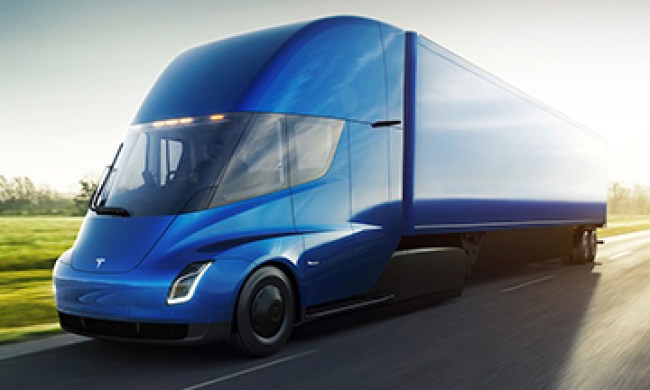German engineering giant Siemens unveiled its eHighway concept for greener transportation back in 2012. The system comprises a hybrid truck that draws power from overhead electric cables for the bulk of its journey, switching to diesel power at the very start and end of a journey on smaller roads that don’t have the power lines.
Following a successful trial in Sweden, the system is now up and running on a 1.2-mile (2 km) stretch of road near Stockholm, while there are also plans to try it on several roads around Los Angeles.
Now Germany is getting interested, with Siemens announcing a plan to install the system on a 6-mile (10 km) stretch of the nation’s autobahn near Frankfurt.

Although electric cars are starting to gain traction, the much heavier weight carried by trucks means they require more energy to operate, and battery technology isn’t up to the job yet. Siemens has overcome this with an external system that provides the truck with power as it drives along.
The key part of Siemen’s eHighway system is the extendable power coupler on the top of the trucks that connects to a power line running above one lane of the highway. “Trucks equipped with the system operate locally emission-free with electricity from the overhead line, and automatically switch to a hybrid engine on roads without overhead lines,” the company explains. The coupler can also disconnect on the highway and temporarily switch to diesel power if it needs to overtake a slower vehicle. Once it returns to the lane with the power line overhead, the coupler automatically reconnects and the truck reverts to electric power.
Gerd Riegelhuth, head of transport at Hessen Mobil, responsible for road management in and around Frankfurt, said that construction of the system will “demonstrate the feasibility of integrating overhead contact systems with a public highway,” adding, “The system will be used for real transport networks, and prove the practicality of climate-neutral freight transport in the urban region of Frankfurt.”
Siemens says its eHighway is “twice as efficient compared to internal combustion engines” and therefore helps to significantly reduce energy consumption and cut local air pollution.
Germany has pledged to slash carbon dioxide emissions by 80 to 95 percent by 2050, and is targeting 2030 as the final date for new sales of gas- and diesel-powered vehicles. Expanding the use of Siemens’ eHighway could also go some way to helping the country achieve its green ambitions.


